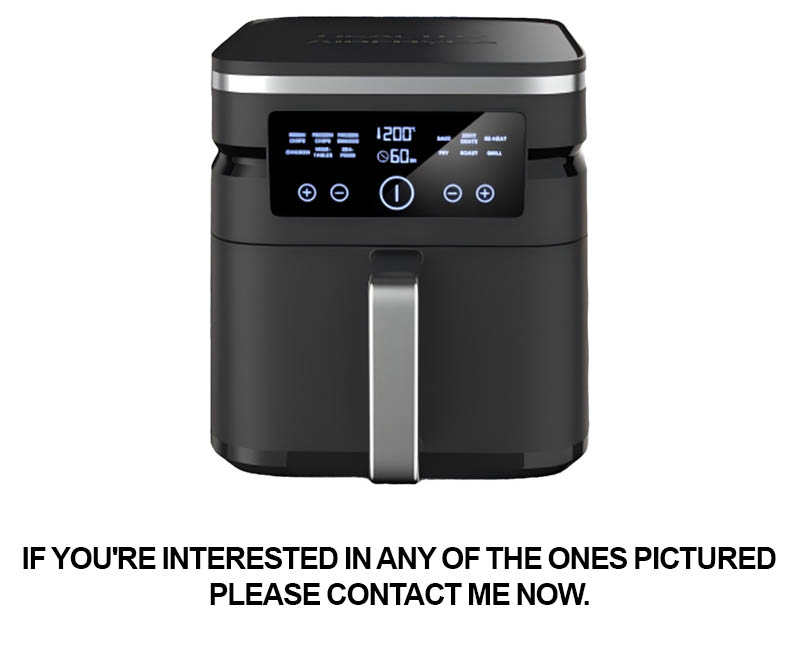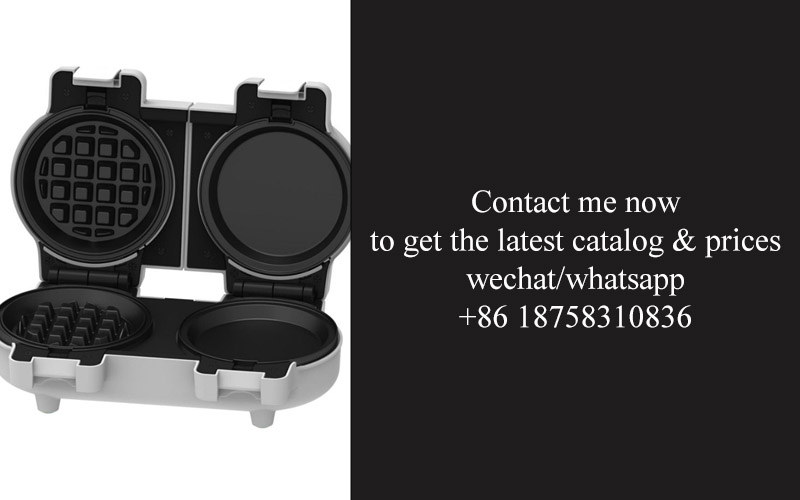Address
304 North Cardinal
St. Dorchester Center, MA 02124
Work Hours
Monday to Friday: 7AM - 7PM
Weekend: 10AM - 5PM
Address
304 North Cardinal
St. Dorchester Center, MA 02124
Work Hours
Monday to Friday: 7AM - 7PM
Weekend: 10AM - 5PM

In today’s rapidly evolving e-commerce world, the kitchen appliances industry has seen a remarkable transformation. As online platforms continue to gain popularity, dropshipping has emerged as a viable business model for entrepreneurs looking to capitalize on this niche market. This article delves into the strategies and insights that can lead to success in the world of kitchen appliances dropshipping, highlighting the importance of leveraging online platforms and adapting to the changing trends.
The online kitchen appliances market in Europe and America has experienced a remarkable surge in recent years, driven by changing consumer preferences, technological advancements, and the convenience of e-commerce platforms. This upward trajectory is not just a trend; it’s a transformation that’s reshaping the way people shop for and interact with their kitchen essentials.
Consumers are increasingly seeking efficiency and style in their kitchen appliances, and the internet has become the go-to destination for discovering and purchasing these gadgets. Smart appliances, in particular, have gained significant traction, as they cater to the growing demand for connectivity and automation in everyday life.
Smart refrigerators, for example, are not just for storing food; they’re equipped with features like touchscreens, Wi-Fi connectivity, and even predictive maintenance alerts. This level of sophistication has become the norm for many tech-savvy consumers, who are no longer satisfied with the basic functionalities of traditional kitchen appliances.
The rise of online marketplaces like Amazon, eBay, and the regional e-commerce giants such as Lazada and Shopee has made it easier than ever for consumers to compare prices, read reviews, and make informed purchases without leaving their homes. These platforms have become the cornerstone of the online kitchen appliances market, providing a vast array of options and competitive pricing.
Another factor contributing to the growth of the online kitchen appliances market is the shift towards healthier eating habits. With more people cooking at home, the demand for high-quality cookware, kitchen tools, and health-focused appliances has surged. From air fryers to slow cookers, these products are not just cooking devices; they are part of a lifestyle change that emphasizes convenience without compromising on nutrition.
The integration of artificial intelligence (AI) and the Internet of Things (IoT) has also played a pivotal role in the evolution of the kitchen appliances market. AI-powered ovens can recommend recipes based on the ingredients you have, while smart kitchen scales can track your dietary intake and offer personalized health advice. These innovations are not just futuristic; they are becoming increasingly accessible to the average consumer.
Despite the rapid growth, the online kitchen appliances market in Europe and America faces challenges. One of the biggest hurdles is ensuring the quality and safety of products. Consumers need to trust that the appliances they purchase online are reliable and meet stringent safety standards. This has led to a rise in third-party certifications and consumer reviews, which are now critical in the decision-making process.
Moreover, the logistics of shipping heavy and fragile kitchen appliances present a unique set of challenges for e-commerce companies. Efficient packaging, reliable delivery, and excellent customer service are non-negotiable in the online kitchen appliances market. Companies that can navigate these logistics effectively are more likely to succeed in this competitive landscape.
The environmental impact of kitchen appliances is another important consideration. As consumers become more environmentally conscious, there is a growing demand for energy-efficient and sustainable appliances. Companies that can offer eco-friendly options are not only addressing a consumer need but are also positioning themselves as leaders in the market.
In conclusion, the online kitchen appliances market in Europe and America is on a trajectory that is being propelled by technological advancements, changing consumer behaviors, and the convenience of online shopping. While challenges remain, the opportunities for innovation and growth are immense. As the market continues to evolve, it will be interesting to see how it adapts to the changing needs and values of consumers.

In the ever-evolving world of kitchen appliances, innovation isn’t just about adding new features; it’s about redefining the way we interact with our cooking tools. Here are some fresh ideas that are reimagining the kitchen appliance landscape:
Smart Connectivity for Seamless CookingGone are the days of guessing how much time is left on the oven or the status of the slow cooker. Imagine a kitchen where all your appliances communicate with each other. A smart oven could sync with your smartphone to notify you when your roast is perfectly done, while your refrigerator can suggest recipes based on the ingredients you have, all through a unified app interface.
Eco-Friendly and Energy-Efficient DesignSustainability is more than just a buzzword; it’s a necessity. Appliances that consume less energy and use eco-friendly materials are not only good for the planet but also for your utility bills. Think solar-powered countertop ovens, induction cooktops that reduce heat loss, and dishwashers that use recycled water.
Personalized Cooking with AI IntegrationArtificial Intelligence (AI) has the potential to revolutionize cooking. Appliances that can learn your preferences and cooking habits can offer personalized recipes and cooking modes. An AI-powered blender, for instance, could analyze your ingredients and suggest the best settings for smoothies or soups.
Compact and Modular AppliancesUrban living often means limited space, but that doesn’t mean compromising on appliances. Compact, multi-functional devices that can be combined or stacked to suit different kitchen layouts are a game-changer. Imagine a modular system where a compact oven can be swapped out for a microwave or a countertop induction cooktop.
Smart Sensors for Safety and HealthKitchen appliances are becoming more aware of their surroundings. Smart sensors can detect gas leaks, monitor cooking temperatures to prevent fires, and even track the air quality in your kitchen. This not only adds an extra layer of safety but can also provide data on your cooking habits to help you live a healthier lifestyle.
Interactive Cooking GuidesInteractive displays on appliances are no longer just for showing settings and timers. Modern appliances can offer interactive cooking guides that walk you through the process of preparing a dish. Touchscreens could provide step-by-step instructions, while built-in cameras can show you how to handle ingredients or use tools.
Water-Saving and Filtering TechnologyWater is a precious resource, and the kitchen uses it heavily. Appliances that incorporate water-saving technology, such as low-flow faucets and dishwashers that recirculate water, are crucial. Additionally, in-built water filters that purify tap water for cooking and drinking can greatly enhance the quality of your food and beverages.
Customizable and Upgradeable DesignIn the future, appliances might not be a one-time purchase. With customizable designs and upgradeable components, you could start with a base model and add features over time. This could mean upgrading your oven to include a convection setting or adding a sous-vide function to your pressure cooker.
Health-Conscious FeaturesFrom air fryers that use minimal oil to steam ovens that preserve nutrients, health-conscious consumers are looking for appliances that align with their dietary needs. Appliances with health-focused features are becoming more popular, providing options that cater to vegan, gluten-free, and low-carb lifestyles.
Energy Harvesting TechnologyFinally, the future of kitchen appliances might include devices that harness energy from their surroundings. This could be as simple as a countertop appliance that charges itself with sunlight or uses the heat from the oven to power a small fan to circulate air around the kitchen.
By embracing these innovative ideas, kitchen appliances are not just becoming more efficient and convenient; they’re also becoming smarter, more personalized, and more sustainable, reflecting the changing demands and values of today’s consumers.

In the ever-evolving landscape of the kitchen appliances market, staying ahead of the curve is key. To do so, a deep dive into market trends and data analysis is crucial. Here’s a glimpse into the insights and data that are shaping the industry:
The surge in smart kitchen technology is undeniable. According to a report by Grand View Research, the smart kitchen appliances market is expected to reach a value of $24.2 billion by 2025. This growth is fueled by the increasing demand for convenience and efficiency, as well as the integration of IoT (Internet of Things) devices in everyday life.
Consumer preferences are shifting towards energy-efficient appliances. The U.S. Energy Information Administration (EIA) reports that energy-efficient models are becoming more popular, with a significant portion of consumers opting for appliances that reduce their carbon footprint. This shift is not only environmentally conscious but also cost-effective in the long run.
Health and wellness are at the forefront of kitchen appliance innovation. With the rise of home cooking and the emphasis on whole foods, appliances that cater to healthier cooking methods are gaining traction. Induction cooktops, for example, are becoming more popular due to their ability to cook food faster and more evenly, reducing the risk of burning.
The trend towards personalization is also influencing the kitchen appliances market. Data from Statista reveals that over 50% of consumers are interested in customizable kitchen appliances that can be tailored to their specific needs and preferences. Brands are responding by offering modular designs and customizable features, such as adjustable settings for ovens and refrigerators.
Sustainability is a growing concern, and it’s reflected in the market trends. According to a study by the World Wildlife Fund (WWF), there is a significant opportunity for the appliance industry to reduce its environmental impact through sustainable practices. This includes the use of recycled materials, energy-efficient designs, and products that are designed for longevity and repairability.
Smart kitchen appliances are not just for the tech-savvy; they’re becoming more accessible to a broader audience. A report by MarketsandMarkets predicts that the global smart kitchen appliances market will grow at a CAGR of 9.6% from 2020 to 2025. This expansion is driven by the falling costs of technology and the increasing connectivity of homes.
In Europe, the kitchen appliances market is being reshaped by the rise of eco-friendly brands. A survey by Euromonitor International found that over 70% of consumers in the region are willing to pay a premium for sustainable products. This has led to an increase in the availability of energy-efficient and environmentally friendly appliances.
Demographic changes are also playing a role in shaping market trends. As the population ages, there is a growing demand for appliances that are easy to use and maintain. For instance, the popularity of single-serve coffee makers and countertop ovens has surged as they cater to the needs of older adults who may have physical limitations.
The rise of online shopping has had a profound impact on the kitchen appliances market. E-commerce platforms like Amazon and Alibaba have changed the way consumers purchase these products. A study by Statista shows that online sales of kitchen appliances have grown by over 10% annually in recent years, with a significant portion of this growth coming from mobile devices.
Lastly, the integration of artificial intelligence (AI) and machine learning into kitchen appliances is on the horizon. This technology promises to make cooking more intuitive and efficient, with appliances that can learn from user habits and adjust settings accordingly. While still in the early stages, this trend is expected to gain momentum as the technology becomes more advanced and affordable.
In conclusion, the kitchen appliances market is being driven by a confluence of factors, including technological advancements, consumer preferences, and environmental concerns. By understanding these trends and analyzing the data, manufacturers and retailers can better position themselves to meet the demands of the modern consumer.

In the dynamic world of e-commerce, the rise of online marketplaces like Lazada and Shopee has reshaped how consumers in Europe and America discover and purchase kitchen appliances. These platforms have become pivotal in the kitchen appliances e-commerce landscape, offering a unique blend of convenience, variety, and competitive pricing.
The Expansion of Market AccessLazada and Shopee have significantly expanded the market access for kitchen appliance brands. By offering a wide range of products from various local and international manufacturers, these platforms have made it easier for consumers to find the latest and most sought-after kitchen gadgets. This accessibility has not only broadened the consumer base but has also opened up new markets for brands looking to establish a presence in Europe and America.
Personalized Shopping ExperiencesOne of the standout features of Lazada and Shopee is their ability to provide personalized shopping experiences. Through advanced algorithms, these platforms can suggest products based on browsing history, preferences, and even past purchases. This level of personalization has become a key factor in the success of kitchen appliance sales, as it caters to the unique needs and tastes of individual consumers.
Streamlined Checkout ProcessThe e-commerce giants have simplified the checkout process, making it faster and more user-friendly. With features like one-click purchase, express checkout, and various payment options, customers can complete their transactions with minimal effort. This streamlined process has reduced cart abandonment rates and increased the overall conversion rate for kitchen appliance sales.
Competitive Pricing and DealsLazada and Shopee are known for their competitive pricing strategies. They often offer flash sales, discounts, and bundle deals, which have become a staple in the kitchen appliances market. These promotions encourage impulse buys and help consumers save money, making high-quality appliances more affordable and accessible.
Enhanced Product Information and ReviewsThe platforms provide a wealth of information about each product, including detailed descriptions, specifications, and customer reviews. This wealth of information helps consumers make informed decisions. The reviews section, in particular, is invaluable as it allows potential buyers to gauge the performance and durability of kitchen appliances based on real experiences.
Integration with Social MediaLazada and Shopee have successfully integrated social media into their e-commerce model. By promoting products on social media platforms, they create a buzz and drive traffic to their websites. This integration has been particularly effective for kitchen appliances, as social media is often used to share DIY recipes, kitchen hacks, and product reviews.
Mobile-First ApproachBoth Lazada and Shopee have embraced a mobile-first approach, understanding that a significant portion of their user base accesses the platform via smartphones. This mobile optimization is crucial for the kitchen appliances market, as consumers often look for new appliances on the go or while browsing at home.
Sustainability InitiativesIn recent years, Lazada and Shopee have also taken steps to promote sustainability in the kitchen appliances market. By offering energy-efficient products and highlighting eco-friendly features, these platforms are encouraging consumers to make more sustainable choices for their homes.
Customer Service and SupportThe level of customer service provided by Lazada and Shopee is another factor that contributes to their success in the kitchen appliances market. With robust customer support systems and easy-to-navigate return and exchange policies, these platforms ensure a positive shopping experience for customers.
Partnerships with Local BrandsLazada and Shopee have formed partnerships with local brands to offer unique and culturally relevant kitchen appliances. These collaborations help in fostering local businesses and providing consumers with options that resonate with their lifestyle and preferences.
In conclusion, Lazada and Shopee have played a transformative role in the kitchen appliances e-commerce landscape. Their ability to offer a vast selection, personalized experiences, competitive pricing, and robust customer support has made them indispensable for both consumers and brands in the European and American markets. As these platforms continue to evolve, their impact on the kitchen appliances industry is expected to grow even stronger.

In the bustling e-commerce world, kitchen appliances have found a new home online, with platforms like Lazada and Shopee playing a pivotal role in connecting buyers with a vast array of products. Here’s a look at some of the top dropshipping suppliers for kitchen appliances on these popular marketplaces:
Eco Appliances offers a wide range of eco-friendly kitchen gadgets, including energy-efficient blenders, slow cookers, and air fryers. Their commitment to sustainability has made them a favorite among eco-conscious consumers.
HomeGuru provides a curated selection of kitchenware, from high-end cookware to affordable kitchen tools. Their products are known for their quality, and they often offer exclusive deals that catch the eye of budget-savvy shoppers.
Appliance World stands out for its extensive inventory, boasting everything from traditional kitchen gadgets to the latest smart appliances. Their dropshipping model allows them to offer a diverse product range without the overhead of inventory management.
Smart Kitchen Solutions specializes in smart kitchen technology, offering everything from smart ovens to smart coffee makers. Their supplier network ensures that the latest innovations are readily available to customers looking to upgrade their kitchen tech.
Green Gourmet is a go-to for those seeking eco-friendly and health-conscious kitchen appliances. They offer a variety of options, from non-toxic cookware to air purifiers that help create a healthier cooking environment.
Appliance Hub is known for its competitive pricing and reliable supply chain. They partner with various manufacturers to offer a diverse range of kitchen appliances, from small countertop appliances to larger kitchen equipment.
TechTrend Appliances is a supplier that keeps up with the latest market trends, offering a selection of trendy and innovative kitchen gadgets. Their ability to quickly adapt to new product launches has made them a popular choice among dropshippers.
Healthy Kitchen Central focuses on health and wellness, providing a range of kitchen appliances designed to promote a healthy lifestyle. From juicers and blenders to kitchen scales, they cater to consumers looking to improve their diet.
Chef’s Choice Appliances offers a premium selection of kitchen appliances that cater to professional chefs and home cooks alike. Their suppliers ensure that the products are of the highest quality, making them a trusted source for specialty items.
Global Gourmet Appliances is a supplier that prides itself on its global reach, offering kitchen appliances from around the world. This unique collection caters to customers who are looking for international culinary experiences at home.
Each of these suppliers has its unique selling points, whether it’s a focus on sustainability, innovation, or competitive pricing. For dropshippers on Lazada and Shopee, choosing the right supplier can be the difference between a thriving business and a struggling one. It’s important to consider factors such as product quality, customer service, and the supplier’s ability to fulfill orders efficiently.
When selecting a dropshipping supplier for kitchen appliances, it’s also crucial to evaluate their reputation on the platform. Look for suppliers with high ratings and positive feedback from other dropshippers. This can provide insight into their reliability and the quality of their products.
Moreover, many of these suppliers offer a range of additional services that can benefit dropshippers, such as branded packaging, custom labeling, and even marketing support. These value-added services can help create a more professional and cohesive brand image for your online store.
In the competitive world of kitchen appliances e-commerce, establishing strong relationships with reliable suppliers is key. By doing so, dropshippers can focus on what they do best—selling products and engaging with customers—while their suppliers take care of the rest. Whether it’s the latest in smart kitchen technology or timeless kitchen essentials, these top dropshipping suppliers for kitchen appliances on Lazada and Shopee have got you covered.

Understanding the reliability and trustworthiness of a supplier is crucial. It’s essential to research their reputation and customer reviews to gauge their track record in delivering quality products and maintaining good customer service.
Considering the product range and variety is key. A good supplier should offer a diverse selection that caters to different customer preferences and needs. Look for suppliers who provide a wide array of kitchen appliances, from small appliances like blenders and toasters to larger items such as cooktops and refrigerators.
Quality assurance is non-negotiable. Check if the supplier adheres to quality control measures and has certifications that validate their products’ standards. This ensures that the items you’re selling are not only safe for customers but also meet the expectations of your target market.
Communication is the cornerstone of a successful business relationship. Ensure that the supplier you choose offers clear and efficient communication channels. This includes prompt responses to inquiries, the ability to provide detailed product information, and a willingness to address any concerns or issues that may arise.
Pricing is a delicate balance. While you want to offer competitive prices to attract customers, you also need to ensure that the supplier’s pricing is fair and allows you to maintain a healthy profit margin. Look for suppliers who offer competitive pricing without compromising on quality.
Delivery reliability is vital. Your customers expect their orders to be delivered on time, and a supplier who can’t meet these expectations can harm your brand’s reputation. Assess the supplier’s shipping times, delivery options, and their history of on-time deliveries.
Return and refund policies are critical. Even with the best suppliers, there can be issues with products. Make sure the supplier has a clear and customer-friendly return and refund policy. This not only protects your customers but also gives you peace of mind as a dropshipper.
Customer service is an extension of your brand. Choose a supplier that offers excellent customer service to your customers. This means handling inquiries, addressing complaints, and providing support in a professional and timely manner.
Technology integration is becoming more important. Look for suppliers who use modern technology to streamline operations, track inventory, and manage orders. This can help you stay efficient and reduce the risk of errors.
Long-term potential is worth considering. A supplier who is growing and expanding their product line may offer more opportunities for your business in the future. It’s also a sign that they are committed to staying relevant in the market.
Transparency in business practices is a must. Suppliers who are transparent about their sourcing, manufacturing processes, and pricing are more likely to be trustworthy. This transparency can also help you make informed decisions about the products you’re selling.
Lastly, personal experience counts. If possible, reach out to other dropshippers who have worked with the supplier you’re considering. Personal testimonials can provide valuable insights into the supplier’s reliability and the overall experience of working with them.

In the world of e-commerce, success stories are often a beacon for aspiring entrepreneurs. One such thriving niche is the sale of kitchen appliances through dropshipping. Here are a few real-life examples that showcase the journey of dropshippers who have found success in this sector.
Emily’s Kitchen Gadget EmpireEmily started with a small social media following, sharing her love for unique kitchen gadgets. She quickly realized that her audience was interested in these products and decided to dive into dropshipping. By carefully selecting suppliers on Lazada and Shopee, Emily was able to offer a variety of products at competitive prices. Her attention to customer service and personalized product recommendations led to a rapid growth in sales and a loyal customer base.
The Culinary ConnoisseurA food blogger turned e-commerce entrepreneur, The Culinary Connoisseur, leveraged their expertise in kitchen appliances to curate a selection of top-rated items. By focusing on high-quality brands and ensuring that their suppliers met strict quality control standards, they were able to build a reputation for reliability. This, combined with engaging content and strategic marketing, turned their dropshipping venture into a profitable business.
The Minimalist Chef’s Appliance StoreFor those who prefer a minimalist approach to cooking, The Minimalist Chef’s Appliance Store has become a go-to destination. By specializing in compact, space-saving kitchen gadgets, this dropshipper taps into a niche market. They’ve built a strong brand by showcasing how each product simplifies the cooking process. The use of high-quality images and detailed product descriptions has helped convert browsers into buyers.
The Eco-Friendly ChefSustainability is at the heart of The Eco-Friendly Chef’s business model. They focus on dropshipping eco-friendly kitchen appliances, catering to a growing segment of environmentally conscious consumers. By partnering with suppliers who offer energy-efficient and sustainable products, they’ve managed to create a brand that resonates with a specific demographic. Their commitment to sustainability has not only boosted sales but also earned them a positive brand image.
The Global Gourmet’s KitchenwareThe Global Gourmet’s Kitchenware offers a diverse range of kitchen appliances that cater to both professional chefs and home cooks. By utilizing Lazada and Shopee’s global reach, they’ve been able to source products from around the world, providing their customers with unique and high-quality items. Their strategy includes extensive market research to identify the latest trends and customer preferences, ensuring that their inventory stays fresh and appealing.
The Tech-Savvy Chef’s KitchenWith the rise of smart home technology, The Tech-Savvy Chef’s Kitchen has capitalized on the trend by offering cutting-edge kitchen appliances. They focus on products that integrate with smart devices, making cooking more convenient and efficient. Their success lies in their ability to stay ahead of the curve, constantly updating their inventory with the latest innovations. This has allowed them to attract tech-savvy consumers who are eager to bring modern technology into their kitchens.
The Family Chef’s Appliance BoutiqueThis dropshipper has made a name for themselves by focusing on family-friendly kitchen appliances. They offer a range of products that cater to different cooking levels, from beginners to experienced chefs. By creating a user-friendly website and providing detailed cooking tips and tutorials, they’ve helped customers make informed purchasing decisions. Their approach has resonated with parents looking for quality appliances that the whole family can enjoy.
The Health-Conscious Chef’s SelectionThe Health-Conscious Chef’s Selection has gained popularity by specializing in kitchen appliances that promote healthy cooking habits. They offer products like air fryers, slow cookers, and juicers that make it easier for customers to prepare nutritious meals at home. Their success is attributed to their dedication to customer education, providing guides on healthy eating and cooking techniques alongside their product listings.
Each of these success stories demonstrates the potential for dropshippers in the kitchen appliances sector. By focusing on niche markets, high-quality products, and exceptional customer service, these entrepreneurs have been able to carve out a successful place in the e-commerce landscape. Their experiences offer valuable lessons for anyone looking to embark on a similar journey in the world of kitchen appliances dropshipping.

The kitchen appliances industry is undergoing a remarkable transformation, driven by technological advancements and changing consumer preferences. Here’s a glimpse into the future of this dynamic sector.
Smart Integration is KeyAs technology becomes more integrated into our daily lives, kitchen appliances are expected to become smarter and more connected. Imagine a refrigerator that not only keeps your food fresh but also orders groceries when you’re running low, or a stove that adjusts its temperature based on the recipe you’re following. The future kitchen will be a hub of smart devices that work together to simplify and enhance cooking experiences.
Sustainability Takes Center StageThe push for sustainability is only going to grow stronger. Consumers are increasingly aware of their environmental footprint, and this is translating into a demand for energy-efficient and eco-friendly kitchen appliances. We can expect to see a surge in appliances made from recycled materials, with energy-saving features that not only reduce utility bills but also contribute to a greener planet.
Health and Wellness Influence DesignHealth-conscious consumers are driving changes in kitchen appliance design. From air-fried ovens that reduce oil usage to slow cookers that make healthy, homemade meals more accessible, appliances are being developed to support wellness. Look for a rise in kitchen gadgets that promote healthy eating habits and cooking methods.
Personalization is the New NormWith the advent of 3D printing and advanced manufacturing techniques, the possibility of personalized kitchen appliances is on the horizon. Customers might soon be able to customize their appliances to match their kitchen decor or even their cooking preferences, with features that cater to specific dietary needs or cooking styles.
The Emergence of Subscription ModelsThe subscription model is already making waves in various industries, and the kitchen appliances sector is no exception. Instead of purchasing appliances outright, consumers might opt for subscription services that provide regular maintenance, updates, and even recycling of their appliances. This model could lead to a more circular economy, where products are designed for longevity and ease of recycling.
Globalization of TrendsTrends in kitchen appliances are becoming more globalized as cultures blend and consumer habits evolve. For example, the popularity of Asian cuisine in Western countries has spurred a demand for woks and rice cookers, while the spread of fusion cooking techniques is prompting appliance manufacturers to create multi-functional devices that can handle a variety of cooking styles.
E-commerce ExpansionThe growth of e-commerce platforms like Amazon, Lazada, and Shopee is expected to continue, providing consumers with an ever-growing selection of kitchen appliances. This digital marketplace allows for real-time reviews, personalized recommendations, and easy comparison shopping, making it easier for consumers to find the appliances they need.
Rise of the DIY Home ChefWith the rise of cooking shows and social media influencers, there’s a growing interest in DIY cooking and baking. This trend is likely to influence the kitchen appliances industry, with an increase in user-friendly, high-quality appliances aimed at home chefs of all skill levels. The market may see more intuitive interfaces, interactive features, and a focus on making cooking more enjoyable and accessible.
Regulatory Changes and Safety StandardsAs the industry evolves, so too will the regulations and safety standards. We can expect to see stricter guidelines for energy efficiency, safety, and sustainability. Manufacturers will need to stay abreast of these changes to ensure their products meet the latest requirements.
The kitchen appliances industry is poised for a future filled with innovation and change. As consumers demand more from their appliances, the industry will respond with products that are smarter, more sustainable, and tailored to individual needs. The future kitchen will be a testament to human ingenuity and the relentless pursuit of convenience and wellness.

In the ever-evolving landscape of e-commerce, leveraging online platforms has become a cornerstone for dropshipping success in the kitchen appliances industry. From the convenience of global reach to the flexibility of managing inventory without the heavy lifting, the advantages are clear. Here’s a closer look at the key aspects that contribute to the thriving success of dropshipping kitchen appliances online.
Customer Demand and Market TrendsConsumer preferences are shifting, with a growing emphasis on smart and energy-efficient kitchen appliances. This trend has been accelerated by the increased time spent at home due to various global events, leading to a surge in demand for products like air fryers, slow cookers, and smart ovens. Understanding these market trends is crucial for dropshippers to stay ahead.
Product DiversificationOne of the strengths of dropshipping is the ability to offer a wide range of products without the need for physical inventory. Successful dropshippers in the kitchen appliances sector have capitalized on this by diversifying their offerings. From high-end brands to niche products like vintage-style toasters, the variety ensures that there’s something for every customer.
Streamlined OperationsThe operational benefits of dropshipping are undeniable. Dropshippers can focus on marketing and customer service while suppliers handle the fulfillment process. This streamlined approach allows businesses to scale quickly without the complexities of warehousing and logistics.
Marketing StrategiesEffective marketing is the lifeblood of any dropshipping venture. Those who have found success in the kitchen appliances niche have employed a mix of strategies, including targeted social media campaigns, influencer partnerships, and SEO optimization. They understand the importance of showcasing the unique selling points of their products and engaging with their audience on various platforms.
Customer SatisfactionCustomer satisfaction is paramount in the dropshipping model. Dropshippers who prioritize customer service and product quality have seen their businesses flourish. By addressing issues promptly and ensuring that the products meet high standards, these entrepreneurs have built a loyal customer base.
Adapting to Technological AdvancesThe integration of technology in kitchen appliances has opened up new opportunities for dropshippers. Smart appliances that can be controlled via smartphones or other devices are becoming increasingly popular. Entrepreneurs who can adapt to these technological advances and offer cutting-edge products are likely to see a competitive edge.
Global ExpansionThe beauty of dropshipping is its potential for global expansion. Successful dropshippers have tapped into international markets, reaching customers in countries like the United States, Canada, the United Kingdom, and Australia. This global reach allows for a broader customer base and increased sales potential.
Cost EfficiencyOne of the most compelling reasons to engage in dropshipping is the cost efficiency it offers. With no inventory costs, dropshippers can allocate their resources more effectively, investing in marketing, customer acquisition, and business growth strategies.
Supply Chain ManagementChoosing the right suppliers is a critical aspect of dropshipping success. Successful entrepreneurs have developed strong relationships with suppliers who can provide reliable, high-quality products. Efficient supply chain management ensures that orders are fulfilled quickly and accurately.
Legal and Compliance ConsiderationsNavigating the legal and compliance landscape is essential for any dropshipping business. Understanding international trade laws, product safety standards, and consumer protection regulations is crucial to avoid legal pitfalls and maintain a good reputation.
Brand BuildingBuilding a strong brand identity is a gradual process but can significantly impact a dropshipping business’s success. By focusing on brand storytelling, product quality, and customer experience, dropshippers can create a brand that resonates with customers and fosters loyalty.
The Importance of Continuous LearningThe e-commerce landscape is dynamic, and staying informed about the latest trends and best practices is vital. Successful dropshippers are continuous learners, always seeking to improve their strategies and adapt to the changing market conditions.
In conclusion, the key to leveraging online platforms for kitchen appliances dropshipping success lies in understanding market trends, diversifying product offerings, streamlining operations, focusing on customer satisfaction, embracing technological advancements, expanding globally, maintaining cost efficiency, managing the supply chain effectively, complying with legal requirements, building a strong brand, and continuously learning and adapting. By mastering these elements, dropshippers can navigate the competitive kitchen appliances market and achieve sustainable growth.